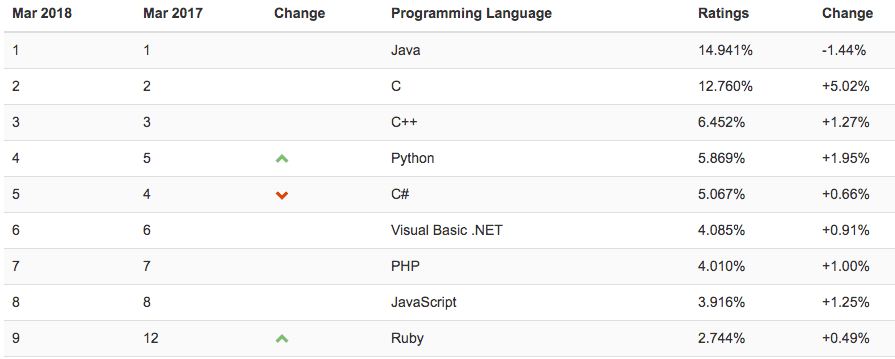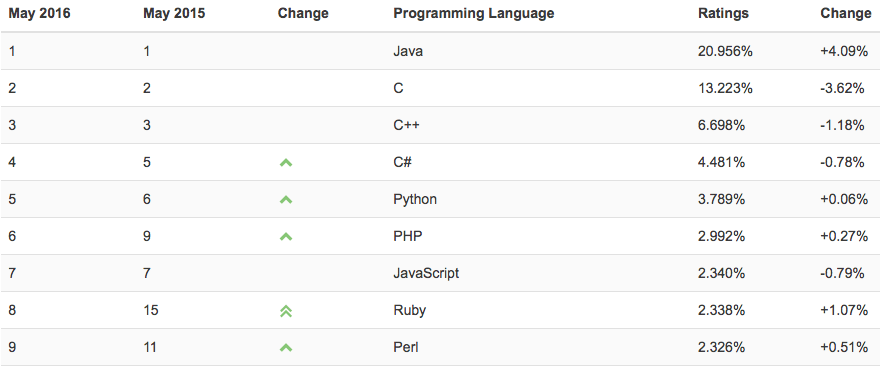TIOBE replaces their index content each month, so I quote:
“Ruby is back in the TIOBE index top 10 and now it seems to be for a longer time. If we take a look at the chart of Ruby it follows a very common pattern for programming languages. Ruby was invented a very long time ago and it remained in obscurity till 2006. That was when the Ruby on Rails framework was released. This framework made it easy to create web applications and because Ruby was the underlying language it skyrocketed in the TIOBE index at that time from position 40 to a top 10 position. It also was awarded the TIOBE programming language of the year in 2006. All new language gurus were in ecstasy about Ruby. The language peaked in 2008, but then all hipsters moved to a new language and Ruby dropped to one third of its popularity. It remained there for a long time but is now catching up very slowly. The fact that it is getting more popular so gradually is a good sign. This means that its increase in popularity is structurally instead of being pushed by hypes. Some other interesting moves this month are that both Julia and Kotlin entered the top 40, whereas Rust and Groovy lost their positions in the top 50.”

